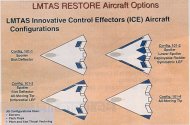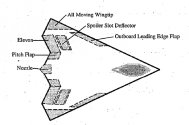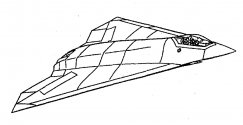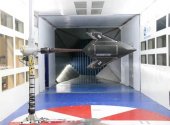My three cents:
Whenever discussing "fighter generations" we should always remember that this classification is not meaningful and is fundamentally a PR device.
"Fighter generations" existed in historical analyses but only entered common parlance as consequence of PR campaign for Lockheed during the development of F-22 and F-35. In the 90s the budgets and support for the aircraft were threatened and Lockheed has banked everything on their production leveraging itself to the brink of bankruptcy to acquire the necessary production capabilities. That was when journalists and lobbyists everywhere suddenly started talking about "fifth generation" which was so fundamentally superior to "fourth generation" that not funding the program would threaten American security. The F-35 scam was promoted by playing up "4.5th gens" that only "5th gens" could counter.
Currently we have generally accepted criteria for distinguishing the generations of fighters but they are not truly rigorous. What is certain is that generations are not defined by their airframe. They are however defined by a single core trait that influences the overall design and this core trait must be inherited in subsequent generation.
This is how I would classify fighter generations according to their core traits:
1st gen - jet engine
2nd gen - supersonic speed
3rd gen - multirole capabilities enabled by sensors
4th gen - enhanced kinematics and maneuverability
5th gen - VLO
6th gen - AI pilot a.k.a "optionally manned"
If you take a moment to think about those core traits you'll see that they define all the other traits. For example 5th gen VLO requires a different approach to situational awareness and 6th gen AI pilot requires extensive networking. You can have 5th gen sensors in a 4th gen airframe but you don't have to. But you can't have a truly VLO aircraft with 4th gen sensor approach.
The trait without which the rest doesn't exist as a necessary set should be always the defining trait much like it is done in the study of evolution of life.
The third generation is the most confusing because it lacks distinct change to airframe design that characterized transitions between 1st and 2nd as well as 4th and 5th and that's usually as far as journos understand - hence confusion. For example MiG-21 begins as a 2nd gen fighter which is modified until it becomes a 3rd gen (bis) or 3.5 gen (LanceR). F-4 begins as a 2nd gen but is a 3rd gen for most of its service. F-14 is sometimes defined as 4th generation when it is clearly a late 3rd gen. It is also often missed that 3rd gen is the "sensor generation" and "BVR generation" because the capability is associated with 4th gen due to Reagan era propaganda and Desert Storm.
The "half generations" again are consequence of PR campaign for upgraded 4th gen fighters with capabilities from the 5th generation set suggesting that the aircraft is "halfway there". It wouldn't exist if 5th generation wasn't promoted as a set of capabilities to expand funding.
The concept of "half generations" hovewer has absolutely no meaning beyond 4th gen. You can upgrade a 3rd gen aircraft with modern systems from 5th gen aircraft. How will you classify it? It's both more and less than 4th gen. If 6th gen's core trait is AI pilot as I suggested then literally any airframe can have the core 6th gen trait without inheriting anything else from previous generations. At some point upgrades to 5th gen aircraft might make it a proper 6th gen.
"Fighter generations" is just a way to pretend that you say a lot when you are saying very little. It is a PR device. If we want to have a meaningful discussion we should avoid "word salads" that are so beloved by journalists, especially in the mainstream, because that's how you get an article worth of text without anything being said.
That leaves us in a position to ask what will be the physical airframe defining features of a 6th generation aircraft?
I believe those features will include:
- Significantly greater stealth and so called "broadband stealth," compared to 5th generation aircraft
- Significantly greater range/combat radius/endurance compared to 5th generation aircraft
- Significantly greater internal weapons bay/magazine capacity compared to 5th generation aircraft
- Perhaps conformal/fuselage integrated sensors to a significantly greater degree than 5th generation aircraft
By this logic F-15 and F-16 are different generations when they are simply different types of aircraft.
This is an image from CSBA's report on future trends in air combat. Their idea of a "fighter" looks very similar to a certain 1980/90s bomber which in turn is based on German WW2 designs.
Bombers obviously do not follow "fighter generations" and 6th gen is slated to enter service in the next decade.
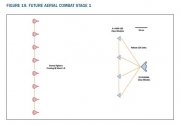
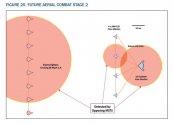

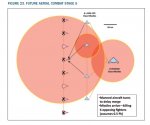
It's the author's subjective, if well explained by data, vision naturally but it shows something crucial - future air combat is going to change more rapidly than in the last few iterations or "generations".
There was less change in air combat from 1975 to 1991 than there was immediately before and after introduction of AMRAAM. Evolution is always a punctuated equilibrium - long periods of relative stability divided by radical transformative change.
I would expect manned 6th gen fighters to have the same payload as they will serve as
decision nodes and not payload or sensor platforms.

In my book J-20 can be a 6th gen once it is upgraded with necessary capabilities. Of course the PR for NGAD will make it seem like it can't but I've explained the nature of this process at the beginning of my post.
If your 6th gen can operate effectively outside of enemy sensor rage then it doesn't need magic airframe using "broadband stealth". On that:
"Broadband stealth" is a PR buzzword that is meant to impress people who know nothing about anything. It obfuscates the problem of observability within a spectrum and resolves it by the use of magic words. We should avoid using such dishonest PR terms which aim for a
sale rather than a solution.
.... and those first three airframe features, IMO, will mean that I think 6th generation aircraft are going to be larger, more stealthy, and less maneuverable than 5th generation predecessors.
There is no indication that a 6th gen fighter will be less maneuverable than F-35 which for example is more maneuverable (clean) than a loaded F-16 but less maneuverable than a clean F-16. In "beast mode" F-35 is as maneuverable as a thrown brick.
Also "maneuverability" is another buzzword that doesn't describe the actual characteristic. You need different "maneuverability" for dogfighting than for evading missiles. MiG-31 can "outmaneuver" a missile but won't be able to "outmaneuver" an F-22 which in turn will not be able to "outmaneuver" a missile.
6th generation is universally described as a family of systems which will include manned and unmanned aircraft and those will have different kinematic capabilities. There might even be difference in kinematics between manned/optionally manned 6th gens.
We don't even really know what kind of maneuverability will be of primary importance because the two crucial technologies that will provide an evolutionary leap - directed energy weapons and swarms - have not yet been implemented and tested in practice against peer opponent.
So, unless you're operating off a carrier where you require the better low speed handling and extra control that canards and/or some sort of V tails can offer, I think a 6th generation fighter would ideally be a tailless delta, without canards.
My understanding is that canards are not particularly problematic. The biggest problem are vertical stabilizers because they are the largest corner reflector and disrupt VLO at multiple angles, especially as the aircraft is illuminated from the rear or side.
As long as your airframe approximates a single plane it is possible to reduce reflection through shaping and retain LO even when illuminated by a beam that is perpendicular to the airfame's main plane. You can't resolve corner reflectors.
Canards apart from being control surfaces also provide additional lift at the nose (see Su-30MKI). The more your airframe resembles lifting body the less you need that additional lift through traditional surface. An aircraft carrier also has those few extra meters that you can drop after being catapulted to gain lift.
The challenges of shipborne aviation have to do with velocity at takeoff and how it limits mass of payload. As long as you need the pilot in charge of the payload it is a problem of getting optimal mass. Once you do not need all of the payload to be placed on manned fighters
the main problem disappears. More information can be found in boring curves describing mass/velocity ratios for specific cases.
But tailless delta sounds as the optimal direction. Again - YF-23 was "almost a tailless delta" and lost because Lockheed had better PR materials and connections to the people making the call. The competition was resolved on Pentagon's uncertainty about Northrop's ability to deliver on buzzword promises that the Pentagon asked for. That sounds like Lockheed's playbook.
Whatever we do, we should not use Lockheed's playbook to inform ourselves. It's like shooting yourself in the head to achieve nirvana.

